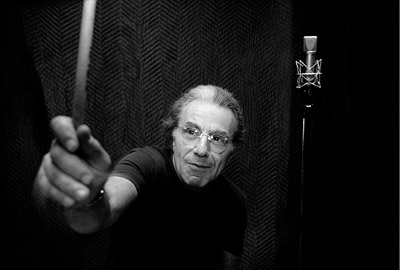"I'm about to revive this sucker somewhat. Look for more music-related items and odd bits out of the photo archives. A lot has been happening since my last post- two European tours, a well-received CD, an ed. piece published in a leading drum magazine, Drum!. Currently I'm working on arrangements for a new Pop Art 4 CD, and booking my 2011 European tour, doing a ton of shedding, teaching, and writing drumming materials. Lots of good stuff coming soon..."
Since then this thing has been going swimmingly- I feel we have delivered amply on the "lots of good stuff" promise, and it seems to be paying off in our level of readership, which has been climbing steadily all year. Basically we started at zero with a handful of accidental visits to the defunct photo blog every month, and are ending the year with 41 official followers (thanks, guys!), and averaging 500-600 page loads per day, which my friend and blogging guru Dave Valdez tells me is a good thing. So, a big thanks to everyone who has visited and used the blog!
I don't actually consider myself to have a whole lot to say about music just in words- talk is really a poor accessory to listening and doing- but I think I've still found a blogging voice and focus that isn't a total waste of everyone's time and bandwidth. The daily-ish gig has not transformed me into an extremely glib long-form writer, so a lot of nuance goes unexpressed, or un-elaborated upon. I'm a little bit of a fatalist in that I think if someone doesn't get (sooner or later) the plain value of, say, a Tony Williams ride cymbal transcription or Gil Evans clip, they're not going to be helped by a lot of explanation or raving enthusiasm. Then again, the whole point is communication, so I'll be working on that...
So far I haven't come to regret my decision to continue using the old name (complete with William S. Burroughs-inspired exclamation point) from when I was an actual cruise ship drummer posting photos of the band hanging around. Nobody interprets the actual words after the second or third time they hear them- it just becomes a meaningless label- so I may as well have my little joke.
After the break is an overview of the fairly massive amount of stuff we've covered this year. I've by no means included everything, so be sure to browse the archives using the labels when you find something you like. And of course, if this is of value to you, please become a follower, and help us continue by hitting the "donate" button to the right, and contributing as you see fit. And now, CSD!'s 2011 in review:







































